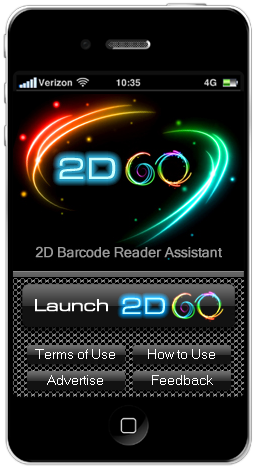IS FIFTEEN SECONDS ENOUGH TIME TO USE A QR CODE IN A TV SPOT ?
We are midway through the year 2012 and it strikes me as hard to believe that, to date, very few television advertisers are taking advantage of the benefits 2D barcodes.
Recently, while consulting for a client, I learned about some misconceptions that seem to be spreading like wildfire throughout the advertising industry regarding QR Codes and how and when to use them in television.
Whether it's creating the actual spot or buying the ad time or both, Ad agencies are involved with nearly every TV ad that you see promoting a national brand. Television advertising is one of the most effective and therefore most expensive types of advertising and many of the well-known agencies are very good at using this channel to help their clients. But, when it comes to empirical knowledge about QR Codes and how to use them to enhance TV ads, most agencies have very little.
AGENCIES NEED TO CHANGE THEIR THINKING
When my client asked about running a QR Code in a 15 second spot, their Ad agency recommended against using them because, theoretically, users would not have enough time to scan the code. At first, this seems like practical advice. On second thought, it demonstrates a lack of foresight.
Many Ad agencies say, "15 seconds is too short to do anything more than X,Y and Z."
What they should be saying is "15 seconds is not a lot of time. How can we make it longer?"
QR Codes extend the time you have to interact with interested consumers. They can effectively "lengthen" the advertisement by up to five minutes. The additional time spent, when factored into the overall ad buy, becomes significant. Ad agencies should be actively thinking of ways to include QR Codes, not dismiss them.
THE ARGUMENT:
15 seconds is not enough time in a TV ad to scan a QR Code.
THE REBUTTALS:
- In most instances, I can access my smartphone and QR Code scanner in under 5 seconds. Time yourself and see how long it really takes you to get your phone ready to scan a code.
- The first QR Code I ever created for TV actually only appeared on screen for .3 seconds. Tivo and DVR devices were used to access the code. 47,000 users (all total) spent an average of 3.5 minutes on the mobile site after scanning the code, roughly 2,742 hours of extra time.
- The 15 second argument might be more valid for a commercial that only runs one time. But, effective TV advertising is about repetition and if the user does not get it the first time, it only heightens their awareness to watch out for the commercial in the future.
- TV commercials are not just for TV anymore. They should also be featured on YouTube, the advertiser's own site and other video websites, making them and the codes more accessible.
- Don't forget the "lower third", where a code can run in the lower left or right during the entire length of the commercial.
NOW YOU'VE GOT THEM ON THE PHONE.
Lastly, and perhaps most important, by giving users access to mobile content via television, you are pairing your message or offer with the ability to respond to it immediately - now you've got them on the phone.
by Philip Warbasse | originally posted at PRINT2D.com on June 22nd 2012






